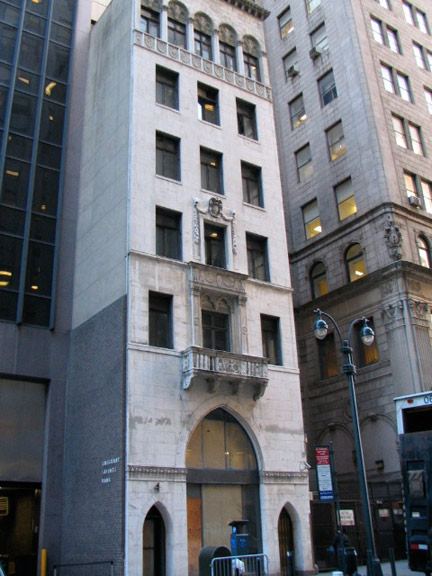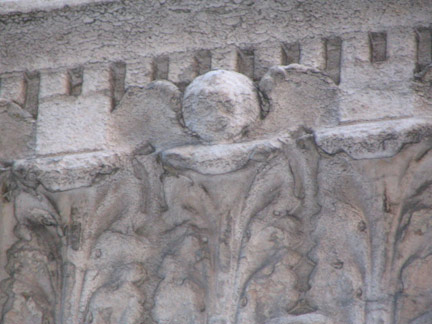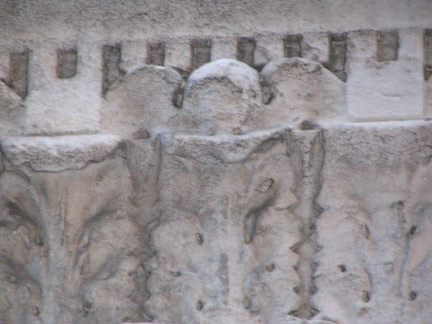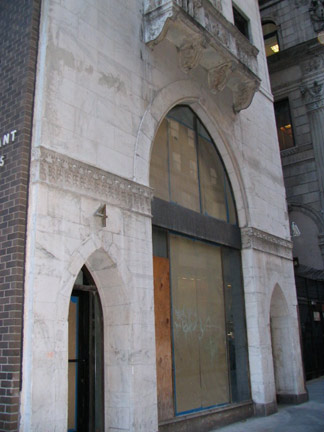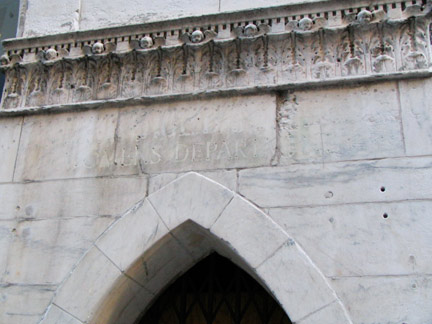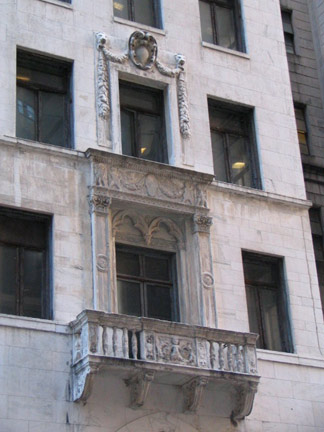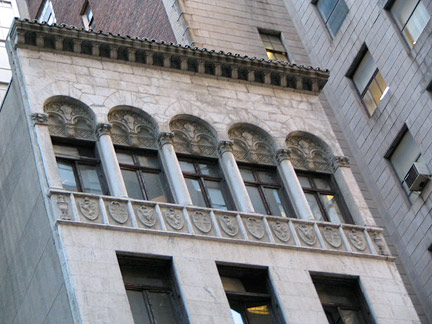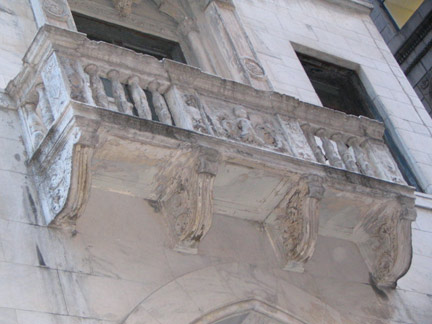Cherubs have always (for me at least) been some of the more bizarre touchstones in the Christian tradition. Sometimes they are depicted as full-bodied babies with wings. Other times, they are shown as babies’ heads with wings. Now, when you think about it, that’s a very bizarre image. And I say that knowing that the book of Revelation (or, the Apocalypse, if you’re Catholic) has some extraordinarily strange creatures that turned up in the Apostle John’s visions at Patmos. Cherubs frequently turn up on Beaux Arts archiecture, and some of the genres that followed, including a mysterious building on 4 East 43rd Street…
It’s a marble-coated Italianate 7-story building, with a balcony on the 3rd floor, three ogee-curve doors (the biggest one in the middle) arhced windows on the 7th floor, just below the roof…
…as well as cherubs with missing faces. Marble, architects have learned, is not the material to use if you want to preserve detail. It’s a “soft” material and more than any other building material, it’s subject to wind, rain and harsh meteorological vagaries.
The building seems untenanted now. The remains of the words “women’s department” can be seen over the door on the right.
So, where are we — what is this place, anyway?
Let the NY Times FYI column of this past September 6 (2008) explain it all for you…
In a 1990 article in The New York Times, the architectural historian Christopher Gray identified the seven-story structure as the former Mehlin Piano building. It was erected in 1916.
According to Mr. Gray, Klein & Jackson, a contractor-developer, built the marble-fronted building, and Andrew J. Thomas designed it. The Mehlin Piano Company leased the building for 20 years and moved out before the lease was up. (The ornate facade, surprisingly, has no distinctly musical designs.) Since then, the building has been used as offices.
Note the symbols under the columns. Time Out New York has additional information, via ForgottenFan and architecture columnist Francis Morrone…
That structure, built in 1916, was designed by Andrew J. Thomas — the same guy who designed the great garden-apartment complexes of Jackson Heights,” says Francis Morrone, author of The Architectural Guidebook to New York City. The seven-story edifice, first home to the Mehlin Piano company, is ornamented with religious symbols, one of which was obviously hijacked by the minions of national socialism. “No one should be alarmed to find swastikas in ornamentation,” says Morrone. “It’s one of the oldest and most universal symbols around, although meanings change across cultures. Swastikas appear on Germanic artifacts long before the days of the Nazis. As for this building, where the symbol is paired — as it often is — with a snake, I would imagine that the Mehlins directed the decorative scheme. Piano making was so strongly associated with Germans anyway that the ornamentation likely just underscores that.”
Photographed November 10, 2008; page completed November 17.


